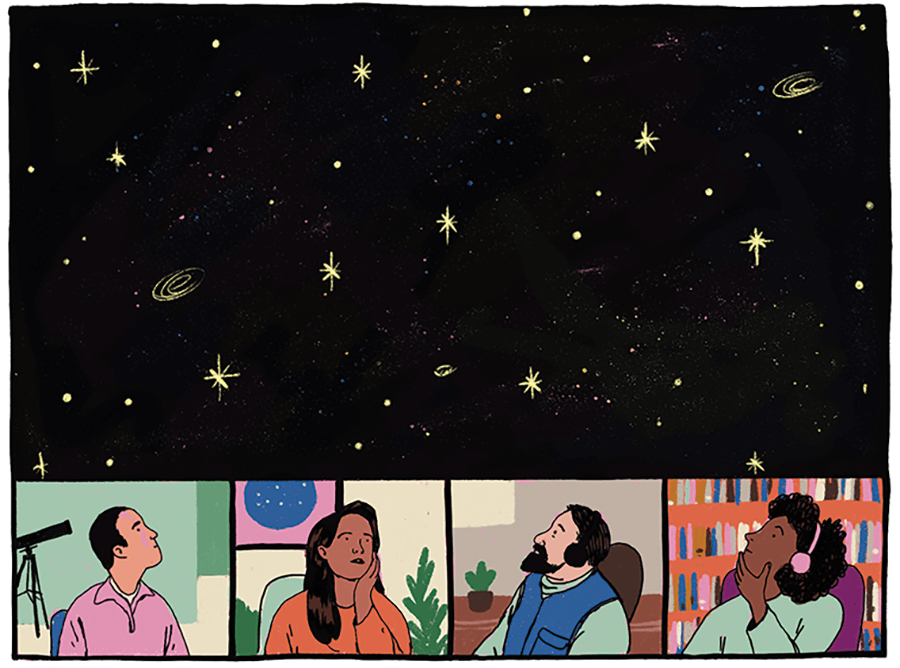International Dark-Sky Association’s Under One Sky 2020 Global Conference
- Date: Nov. 13-14, 2020
- Type: Virtual
- Website: darksky.org
- 2019 Attendees: 150 for in-person event
- 2020 Attendees: 752 for virtual events
Carmen Segovia illustration
“For my part I know nothing with any certainty, but the sight of the stars makes me dream,” said impressionist painter Vincent Van Gogh, whose “Starry Night” is among the most famous works of Western art. In recent times, however, the dark canvas that enables us to stargaze, and therefore to dream, is no longer a given.
The International Dark-Sky Association (IDA) was created in 1988 to preserve and protect the nighttime environment and the heritage of dark skies through education and advocacy around light pollution. Founded by David Crawford, a professional astronomer, and physician and amateur astronomer Tim Hunter, the nonprofit’s movement to protect the night around the world through responsible lighting policies and public education has led to the designation of 170 “International Dark Sky Places.”
The silver lining in IDA’s 2020 annual meeting’s pivot to digital was that it enabled a truly global approach. The event attracts scientists, amateur astronomers, advocates, changemakers, and lighting industry members, and IDA “opted to amplify the voices that are often underrepresented in the dark sky movement by inviting diverse speakers from several different countries,” Lauren Scorzafava, IDA’s communications associate, told Convene. Speakers presented via livestream from 12 different countries, including Peru, New Zealand, Nigeria, China, and Iran.
Stargazers
The 24-hour event (which can be viewed on YouTube (watch below), covered such current topics as how astrophotography can help raise awareness about light pollution and obtaining light pollution ordinances. But it was the opening session’s unique cultural and historical perspective that proved to be most popular with the audience.
Led by Annette Lee, an astrophysicist, artist, and director of the Native Skywatchers research and programming initiative, which aims to revitalize indigenous star and earth knowledge, “the presentation focused on indigenous astronomy worldviews, particularly Ojibwe and D(L)akota,” Scorzafava said, “and how people from all cultures might look to this relationship with the sky as a reminder of the night’s critical importance.”
Over the Moon
You may have heard of ecotourism and gastrotourism, but have you heard of astrotourism? Much of the International Dark-Sky Association’s work focuses on education about this type of travel, which is centered on observing the night sky or visiting astronomy-related facilities, such as museums and observatories.
Casey Gale is associate editor at Convene.

